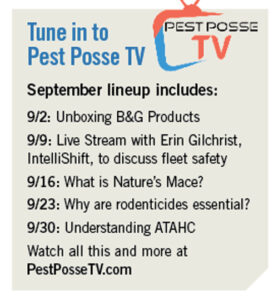 In today’s environmentally conscious world, green pest management has become a vital aspect of the pest control industry. As we delve into this topic, it’s essential to first understand the Federal Trade Commission’s (FTC) green guidelines and how they influence advertising practices within the industry.
In today’s environmentally conscious world, green pest management has become a vital aspect of the pest control industry. As we delve into this topic, it’s essential to first understand the Federal Trade Commission’s (FTC) green guidelines and how they influence advertising practices within the industry.
The guidelines ensure any claims of products or services being green or environmentally friendly are truthful and provable. When marketing pest management services, it’s crucial to substantiate that your offerings are genuinely green. This means that any promotional materials, including brochures, web pages and service agreements, must accurately reflect the eco-friendly nature of your services.
For pest management, proving your green claims often can be straightforward. Many pest control methods involve treatments with products registered in the 25(b) category, considered minimum risk through the Federal Insecticide, Fungicide and Rodenticide Act (FIFRA). Also known as essential oils, these qualify as green. However, it’s vital to ensure all your marketing campaigns are planned with these guidelines in mind.
How to go green
Green pest management focuses on being environmentally responsible. It prioritizes the least-toxic control methods and uses pesticides as a last resort. Essentially, it embodies a true integrated pest management (IPM) or assessment-based pest management (APM)
program, which avoids maintenance treatments and emphasizes prevention.
Both IPM and APM begin with the thorough inspection and identification of pests. This step includes assessing infestation levels and damage caused. Monitoring with the use of pest monitors and visual inspections are essential to establish guidelines for when treatment is necessary.
Preventing pest problems is achieved through cultural practices, followed by mechanical or physical control methods. Following treatment, it’s crucial to re-inspect and evaluate the program’s effectiveness, and make adjustments as needed.
Implementing this approach
Successful implementation of a green pest management program hinges on diligent education and cooperation from customers. Establishing a working partnership is key. Documenting inspection findings, mapping accounts and noting conducive conditions are vital steps. It’s also important to clearly define the responsibilities of both the pest management professional (PMP) and the customer.
Tolerance levels and thresholds for treatment should be established, and consider the pest species and customer preferences. Non-chemical methods should be the first line of defense, with chemical applications used only when necessary. Baits and essential oils are preferred for their effectiveness and lower toxicity.
Continuous assessment
Continuous assessment is integral to green pest management. Regular visual inspections, photo documentation, inspecting pest monitors, and seeking customer feedback are essential components of the APM process. This ongoing evaluation ensures the pest management program remains effective and environmentally responsible.
Green pest management is a comprehensive approach that integrates environmental responsibility into pest control practices. By adhering to FTC guidelines, using least-toxic methods, and maintaining continuous assessment, PMPs can effectively manage pests while safeguarding the environment.
<p>The post The Pest Posse Roundup: Integrate environmental responsibility into your program first appeared on Pest Management Professional.</p>
from Pest Management Professional https://www.mypmp.net/2024/09/22/the-pest-posse-roundup-integrate-environmental-responsibility-into-your-program/
Sacramento CA
No comments:
Post a Comment